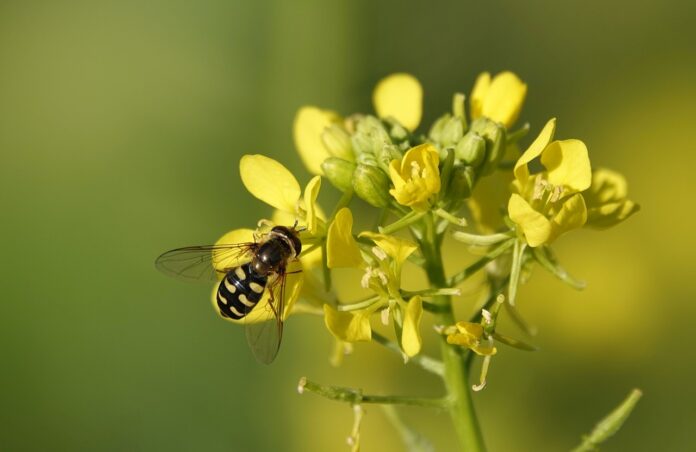Mustard is a versatile plant and condiment derived from seeds of the mustard plant, a member of the Brassicaceae family. The plant includes several species, such as white/yellow mustard (Sinapis alba), brown mustard (Brassica juncea), and black mustard (Brassica nigra). It has been used for culinary, medicinal, and cultural purposes for thousands of years.
Interesting Facts About Mustard:
- Historical Roots: Mustard is among the oldest known spices, used for over 5,000 years in various cultures
- Name Origin: The word “mustard” comes from the Latin mustum ardens, meaning “burning must,” referring to the fiery taste of mustard mixed with grape must
- Three Main Types: The most common mustard seeds are white (or yellow), brown, and black, each offering distinct flavors and heat levels
- Global Production: Saskatchewan, Canada, produces about half of the world’s mustard seeds. Other major producers include Nepal, the Czech Republic, and Russia
- Culinary Versatility: Mustard seeds are used in pickling, spice blends, and cooking oils, while mustard greens are a popular leafy vegetable in many cuisines
- Condiment Popularity: Mustard is the third most-consumed condiment worldwide, following salt and pepper
- Dijon Mustard: Originating in France, Dijon mustard is made with brown and black mustard seeds and verjuice, giving it a robust flavor
- Cultural Expressions: The French phrase avoir la moutarde qui monte au nez (“the mustard rises to your nose”) describes sudden anger, inspired by mustard’s sharp, spicy sensation
- National Mustard Day: Celebrated annually on the first Saturday of August, it honors mustard’s significance in cuisine
- Mount Horeb Mustard Museum: Located in Wisconsin, it houses a vast collection of mustard jars from around the world
- Medicinal Use: Historically, mustard was used to treat toothaches, boost circulation, and even as a warming agent for colds
- Mustard Greens: Fresh mustard greens, popular in South Asian dishes like sarson da saag, are a winter delicacy
- Bioenergy: Mustard seeds are said to emit a bioenergy field, believed to enhance biochemical processes in the body
- Color Inspiration: The color “mustard yellow” has been named after the condiment since 1886
- Hot Mustard: Japanese karashi is a very spicy mustard variety often paired with dishes like steamed buns
- American Mustard: A bright yellow mustard made with turmeric is a staple on hot dogs and hamburgers
- English Mustard: Known for its strength, this variety combines brown and white mustard seeds with wheat flour
- Honey Mustard: A sweeter variant of mustard, often paired with meats and cheese
- Rémoulade Sauce: A French sauce that incorporates mustard, often served with seafood and cold meats
- Spiritual Beliefs: In some cultures, mustard seeds are believed to ward off evil spirits
- Triangle of U: A theory explaining the genetic relationships among mustard species, developed by botanist Woo Jang-choon
- Pope’s Favorite: Pope Clement VI loved Moutarde Violette, a mustard made with grape must, so much that he appointed a mustard-maker
- German Mustard Varieties: Include sweet Bavarian mustard and spicy Düsseldorf mustard, popular with sausages
- Creole Mustard: A grainy, tangy mustard enjoyed in Louisiana, distinct from common yellow mustard
- French Cuisine: Mustard is a key ingredient in sauces and vinaigrettes across French culinary traditions
- Edible Plants: Almost all parts of the mustard plant, including seeds, leaves, and flowers, are edible
- Chemical Warfare: Mustard gas, a notorious chemical weapon, derives its name from the mustard plant due to its similar odor
- Mustard Greens in Nepal: Mustard oil, extracted from seeds, is commonly used for cooking, massages, and religious rituals
- Festival Staple: Mustard greens are essential in Asian spring festivals, symbolizing prosperity and renewal
- Global Appeal: From Indian sarson ka saag to American hot dogs and French moutarde, mustard’s versatility transcends borders
